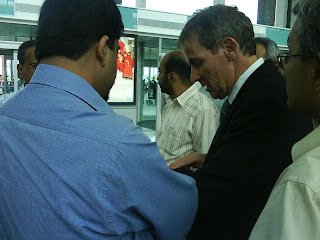Research flip-flops

Last week we read about the Nanavati report overturning everything that the Bannerjee committee had said about the Godhra riots. How can two wise judges studying the same sequence of events come to two totally contradictory conclusions?
Interphone, the long-term study on mobile use, has run into a similar problem. Do mobile phones cause cancer? Do they cook the brain with their radiation? Do they impair hearing? The study had to address these questions, but it has ended in a squabble with its researchers not being able to arrive at any consensus.
The mobile is the most popular electronic device in the world today, and the scientists who ought to have enlightened us about its risks are now divided into three groups with differing opinions.
The study began in 2000 and ended in 2006, cost 30 million dollars (a good Rs 140 crore), and involved around 50 scientists working in 13 countries. It tracked 14,000 people. That, by any standards, is a stupendous effort.
A draft of Interphone's findings was circulated in June, and a final paper will be submitted this month. So what do we as mobile users take home from it?
Difficult to say. Single-country reports have already made it to the media, and some suggest, to everyone's amazement, that using a cell phone actually gives you some protection from brain tumours. The Economist reported that this conclusion was so counter-intuitive that the researchers had to acknowledge their methodology was flawed.
One camp among the Interphone scientists believes any increased incidence of tumours shown in the study is because of the recall biases. (The respondents were asked to remember how many times they had used the phone in a week a decade earlier, and for how long. The wisdom now is that the respondents could have gone way off the mark in what they remembered, considering how no one keeps track of the number of minutes they talk over the phone!). Another camp thinks it really has found increased risks of tumours and wants to call for precautionary measures. A third group isn't saying a thing.
Depending on who is giving out a media statement, you could soon read headlines about whether cellphones cause cancer or not. Generally, the media believe such medical stories have little significance, and push them to some corner on the inside pages.
But such stories relate to people's everyday lives. A diabetic I know started eating lots of oranges after reading a news report that said the fruit was good for those with blood sugar problems. He later read a contradictory report and stopped, but the orange eating would have done some damage by then.
Debates are raging about low fat versus high fat, carb versus protein, and such other choices. Some say coffee has beneficial effects, while others say it harms you. So how do you make out what's good for you? Trust your luck. Toss a coin!
Labels: Godhra, Interphone, mobile phones, reserach

